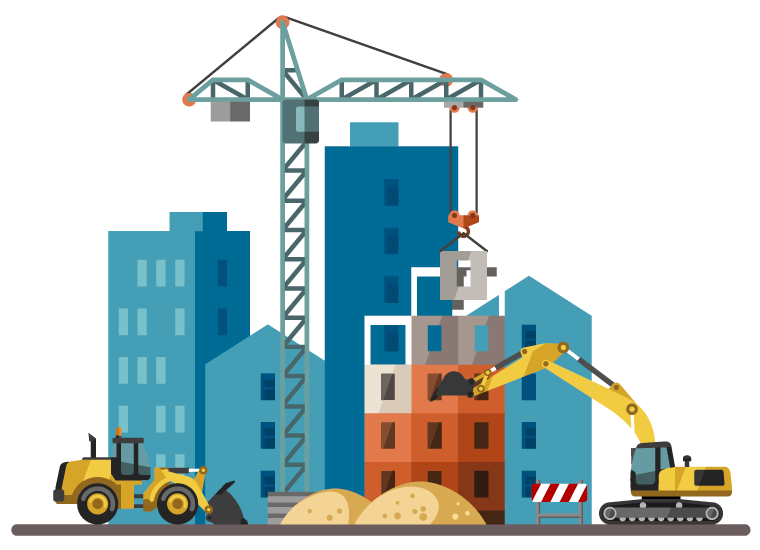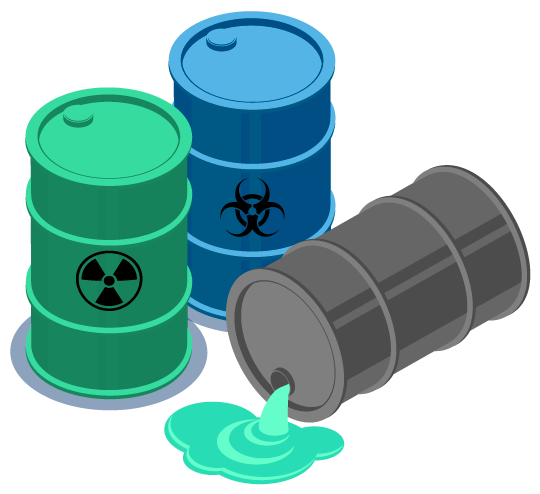The law is clear about how to manage and dispose of waste on construction sites, and you have a legal obligation to not only identify, but also classify waste before you send it for recycling. These steps must be taken so that anyone handling your construction waste deals with it properly.
The Environment Agency has provided a detailed guide on what to include in classification descriptions for construction waste and, in this post, we’ll explain the steps for you.

Classifying the waste
1. Check if the waste needs to be classified
First, you’ll need to ensure the material is actually ‘waste’ and needs to be classified. However, almost all commercial and industrial wastes need to be classified.
2. Identify the code or codes that may apply to the waste
Next, you must identify how the waste is classified in the List of Waste (LoW). This classification identifies what assessment is needed before a LoW code can be assigned to the waste.
The List of Waste (LoW) is a catalogue of all wastes divided into 20 chapters, and the chapters must be used in the correct order of precedence. The chapters contain both the classification codes and the descriptions of each code.
3. Identify the assessment needed to select the correct code
You’ll need to work out:
- a) If an assessment is needed.
- b) How it affects the classification of the waste.
The assessment needed depends on the type of code(s) identified. Codes are divided into four types of entry:
- Wastes that may be hazardous or non-hazardous, known as ‘mirror hazardous’ and ‘mirror non-hazardous’ entries.
- Wastes that are always hazardous, known as ‘absolute hazardous’ entries.
- Wastes that are always non-hazardous, known as ‘absolute non-hazardous’ entries.
Assessing the waste
4. Determine the chemical composition of the waste
In order to assess whether the waste is hazardous property, you need to know its composition. You can get information on the composition of a waste:
- From the manufacturer’s safety data-sheet if the waste is a manufactured product whose composition has not changed.
- When the waste is from a well understood industrial process, the composition of the wastes produced are well understood.
- By sampling and analysing the waste to determine its composition.
5. Identify if the substances in the waste are hazardous substances or Persistent Organic Pollutants
Having determined the chemical composition, you need to check if any of those chemicals are hazardous substances, or persistent organic pollutants (POPs).
6. Assess the hazardous properties of the waste
There are three ways of working out if a waste displays hazardous properties. These are:
- Calculation – referring to a concentration limit for a hazard statement code(s).
- Testing to prove whether a particular hazardous property is present or not (typically used for the physical properties – explosive, oxidising, and flammable).
- The safety data-sheet if the waste is a manufactured product whose composition has not changed, for that specific product.
By this stage, you should know what substances are present in the waste and what hazard statement codes they have. These hazard statement codes determine what hazardous properties you need to consider.
7. Assign the classification code and describe the classification code
At this stage, the types of entries identified in steps 2 and 3 are important.
If the waste is classified under an absolute hazardous entry:
- You must use the classification code provided.
- The waste is hazardous waste.
- Hazardous property assessment is not used for classification purposes.
- The composition and hazardous properties identified in steps 4 to 6 are used only to complete the consignment note.
A key point about absolute hazardous wastes with no hazardous properties: A waste that falls under an absolute hazardous entry (eg. any non-edible oil) is always hazardous. That entry must be used. But, if that waste has no hazardous properties, the absolute hazardous entry still applies. The law does not allow another entry to be applied to that waste.
If the waste was classified under mirror hazardous and mirror non-hazardous entries that refer generally to hazardous substances, then:
- The mirror hazardous code must be assigned if the waste displays a hazardous property or contains POPs above the specified concentration limits.
- The waste is hazardous waste and
- The composition, hazardous properties, and POPs identified in steps 4 to 6 are also used to complete the consignment note.
- When the waste does not display a hazardous property, and does not contain POPs, the mirror non-hazardous code can be assigned.
If the waste was classified under mirror hazardous and mirror non-hazardous entries that refer to a specific hazardous substance or hazardous property, then:
- The mirror hazardous code must be assigned if the waste displays a hazardous property as a result of that specific substance, displays that specific property, or contains POPs above the specified concentration limits.
- The waste is hazardous waste, and
- The composition, all hazardous properties, and POPs identified in steps 4 to 6 are then used to complete the consignment note.
- When the waste does not display a hazardous property as a result of the specific substance, does not display the specific hazardous property, and does not contain POPs, the mirror non-hazardous code can be assigned.
If the waste was classified under an absolute non-hazardous entry, you must use the absolute non-hazardous code. The waste should be managed in line with Duty of Care Regulations and other applicable legislation. If a waste classified as absolute non-hazardous displays a hazardous property, you must include this on the waste transfer note. If you believe an ‘absolute non-hazardous’ waste may display a hazardous property, use steps 4 to 6 to assess this.

A section of the table showing the List of Waste chapters, and their order of precedence, as shown in the government’s Waste Classification guide.
| Waste Code | Description | Entry type
(e.g. MH = Mirror non-hazardous) |
| 17 | CONSTRUCTION AND DEMOLITION WASTES (INCLUDING EXCAVATED SOIL FROM CONTAMINATED SITES) | |
| 17 01 | Concrete, bricks, tiles and ceramics | |
| 17 01 01 | Concrete | MN |
| 17 01 02 | Bricks | MN |
| 17 01 03 | Tiles and ceramics | MN |
| 17 01 06* | Mixtures of, or separate fractions of concrete, bricks, tiles, and ceramics containing hazardous substances | MH |
| 17 01 07 | Mixtures of concrete, bricks, tiles and ceramics other than those mentioned in 17 01 06 | MN |
| 17 02 | Wood, glass and plastic | |
| 17 02 01 | Wood | MN |
| 17 02 02 | Glass | MN |
| 17 02 03 | Plastic | MN |
Why Choose Clear It Waste
As you can see in this post, creating classification descriptions is a complex process, but we’re here to take the stress out of it. If you’re ready to organise your construction waste disposal, get in touch.
As an experienced waste collection company, we’re experts in construction waste management, and our approach to working closely with our customers means we can help you manage your waste efficiently and effectively, in line with government regulations. From sole traders to major construction companies, we work with customers like you across London. Rest assured that Clear It Waste is a company you can rely on.

1.
Get in touch for your free, no-obligation quote.

2.
Book your collection online or with our friendly team.

3.
We collect your waste and leave your area clean and tidy.

